- HOME
- ABOUT
- ORAL HISTORIES
- Bill Holbert
- Bill Russell
- Charlene Wooten Pace
- Charlie Fears
- Donna “Donnie” Morgan Pace
- Faye Russell Chandler
- George Jones
- Henry Twiggs
- J.D. Gilbert & Lula Staton
- John Rhodes
- Kathleen Garren Stephenson Jelley
- Martha Coates Ashley
- Martha Stoney Anderson
- Mildred Thompson Skelton
- Ruth Pace Lawter and Betty Jo Pace Thompson
- Pearlie Mae Suber Harris
- SALUDA HISTORIC DEPOT
- COON DOG DAY & OTHER EVENTS
- HISTORIC DISTRICT
- HISTORIC INNS & HOMES
- OLD PHOTOGRAPHS
- SALUDA HISTORY
- SALUDA PEOPLE
- SCRAPBOOK AND NEWS
- THE RAILROAD
- TOUR OF HISTORIC HOMES
- VINTAGE POSTCARDS
- VISIT SALUDA
Historic Saluda Historic Saluda North Carolina Established in 1881
Historic Saluda | Memories, Places, and People That Make Saluda NC an Enchanted Place to Be

TOUR OF HISTORIC HOMES
The 2017 Saluda Tour of Homes on Shand Hill
| The Historic Saluda Committee sponsored a Tour of Homes on Saturday, June 3, 2017, from 1 – 5 p.m., as a fundraiser for preservation projects in Saluda. Historic Shand Hill had been chosen as the site of the 2017 tour. There was five homes on Shand Hill to visit as well as the Saluda Historic Depot, the Saluda Presbyterian Church, and Lola’s Celebration Venue at Historic Thompson’s Store, all within walking distance of each other. |
| The 2015 Saluda Home and Places Tour was held Saturday, June 6, 2015 – 1:00 to 5:00 p.m. |
The Historic Saluda Committee invited visitors to come and explore some of the oldest homes and places in Saluda from 1:00 to 5:00 p.m. on Saturday, June 6th.
All ticket proceeds went to the Save the Saluda Depot project where the Historic Saluda Committee plans to have a museum, which will feature the train and it’s history of the tracks of Saluda Grade, the steepest single gauge railway in the United States. The museum will also showcase the rich and interesting history of Saluda.
This was a walking tour of about a half mile in the Columbia Heights section of Saluda, so named because many of the original residents lived in Columbia, SC in the winter and summered in Saluda.
The Saluda Historic Depot was open to the public and all were invited to either start or end the tour from this location in the historic downtown district. Docents were on hand to give a tour or the The Episcopal Church of the Transfiguration, which is located, 2 blocks off Main Street at 72 Charles Street. The church was first occupied in 1889.
A block up from the church, the first house on tour was a house on Charles Street which was once part of the Fairview Inn and built around 1896; though renovated it still holds the country charm of Saluda. Folks then walked to the end of Charles St. and visited Sunflower Cottage, which was constructed around 1885. Around the corner on Chisholm Street is the third home, which is Sacsme Hall, built in 1895. Across the street from here, visitors toured the Blue Summer House built in 1890. Two more homes both beside and across from the Blue Summer House named Stoney Lodge and White Pines, both homes built in the 1890s. As an extra treat, visitors toured the gardens of Stoney Lodge, which was selected by the Smithsonian to be included in their Archives of American Gardens. The Historic Saluda Tour of Homes and Places was chaired this year by Sandie Bright, whose home White Pines is on the tour. For more information email historicsaluda@gmail.com or call Sandie at 828-301-4161.
2013 Saluda Home and Garden Tour
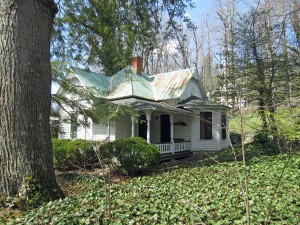 The Historic Saluda Committee hosted a tour of homes on Saturday, June 1, 2013, featuring a historic section of Saluda, along part of Henderson Street, which runs parallel to Main Street. Eight homes were open for touring and four others featured gardens, an art studio and in one, a rock and mineral museum. Most of these homes were built in the late 1890s to early 1900s.
The Historic Saluda Committee hosted a tour of homes on Saturday, June 1, 2013, featuring a historic section of Saluda, along part of Henderson Street, which runs parallel to Main Street. Eight homes were open for touring and four others featured gardens, an art studio and in one, a rock and mineral museum. Most of these homes were built in the late 1890s to early 1900s.
In researching the deeds of many of the houses, it was found that at least four of the homes were built by the same man, O. B. Garren who was also a photographer and one of Saluda’s first mayors. He built in what is now called the “Saluda Vernacular Style” which is defined as everyday architecture influenced by heritage, experience and availability of material.
This house was among the eight homes open for the tour. It was built by O. B. Garren in 1898 and is known as the Liberty Box. It has remained in the same family since the family bought it in 1899. Almost all the furniture in the house was hand built by one of the owners.
Martha and Eric Ashley in the Rock and Mineral Museum inside Crystal Springs
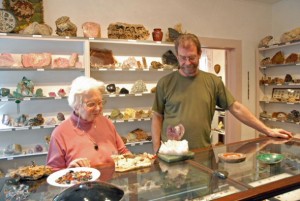 A special treat of this tour was a chance to see what used to be the Polk County Rock and Mineral Museum which opened in 1962 on main street of Saluda (in what is now, the Saluda Grade Café). The collection is now reassembled in “Crystal Springs.” This amazing collection of mostly local specimens is highlighted by a “black light” room, which allowed the viewers to see the iridescence in a large number of rocks in the collection.
A special treat of this tour was a chance to see what used to be the Polk County Rock and Mineral Museum which opened in 1962 on main street of Saluda (in what is now, the Saluda Grade Café). The collection is now reassembled in “Crystal Springs.” This amazing collection of mostly local specimens is highlighted by a “black light” room, which allowed the viewers to see the iridescence in a large number of rocks in the collection.
History of Museum
William Crawford (W.C.) Ashley and his son, Allen Ashley, had been collecting rocks and minerals since the 1940s when they were mining mica along with many other part-time miners in the Spruce Pine, Little Switzerland, Cleveland County areas (all within 90 miles of Saluda). At that time, the US government paid $70 a pound for mica and gold sold for $6 a troy ounce. As of January 2013, gold prices have been between $1,628.00 USD and $1,693.00 USD per troy ounce. Miners were exempt from serving in the military during WW II, as their efforts were used to aid the war effort by providing materials to stockpile needed minerals. When the museum opened on March 25, 1962, the first-ever parade was held in Saluda. Over 1,000 attended and it was followed by a barbeque dinner sponsored by the Blue Ridge Coon Club. The following year, 1963, the Blue Ridge Coon Club, decided that the parade was what Saluda needed to bring folks to town to buy barbeque and bring in needed revenue. Thus began Coon Dog Day, which is held the first Saturday after July 4th and will celebrate its 50th year this coming July 6th, 2013. The museum closed in 1973 and got packed into boxes which stayed under Martha Ashley’s home for nearly thirty years. In the early 2000s, Martha’s son, Eric Ashley, helped his dad, Allen, re-assemble the museum in his parents’ house on Henderson Street.
Henderson Street Tour of Homes and Gardens
One art studio was open and one home actually has a gem and mineral museum in it, both are usually closed to the general public.
2011 Saluda Home and Garden Tour
With the generous inventory of historic houses in Saluda, any tour of historic homes is a much-anticipated event. The June 2011 event featured “Smith Hill”, the area where Dr. Lesesne Smith operated the Infants & Children’s Sanitarium from 1914 until his death in 1949.
Included in the tour that beautiful spring day were Aurora Lodge, the first house built on Smith Hill; Bon Air, which served as a hospital and school as well as a boarding house; Seminar Hall, the site of many lectures; Sleepy Hollow Cottage, where nurses boarded; 50 Smith Hill Drive, an accommodation for mothers and children as well as the site of many poker games; Tree Tops, a physicians’ office; and Stagger Inn, which started out as a chicken house and was renovated to house Dr. Smith’s summer interns.
Here are some photos from the tour:
A little later in the year, the Historic Saluda Committee was invited to join the Smith family and historian Dr. George Jones in a remembrance of Dr. Smith and Old Saluda. Cindy Stephenson Tuttle recorded Dr. Jones’ recollections, and here are some highlights from the video she produced:
******************************************************************************************************************************************
Saluda is extremely walkable and is a great place to explore on your own.
Select one of these self-guided tours, and have fun discovering all the history that Saluda has to offer!
(Files are PDFs and may be printed or downloaded.)
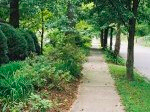 In-town Walking Tours and Town & Country Tour:
In-town Walking Tours and Town & Country Tour: A one-hour trip beginning at the Episcopal Church of the Transfiguration including many of Saluda’s old boarding houses, and an alternate route (also one hour) that includes Smith Hill and the old Charlton-Leland hotel. The “Town and Country” route is 2-3 hours and includes many of Saluda’s churches, more old hotels, and a stunning view of Tryon Peak.
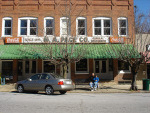 Downtown Historic District Tour:
Downtown Historic District Tour: Leads you through an in-depth exploration of the buildings and sites that comprise the downtown historic district.
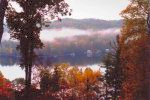 Driving Tours:
Driving Tours: Guides you into the beautiful countryside surrounding Saluda and include the Greenville watershed, Heatherly Heights, and Lake Summit. Allow extra time to enjoy the views!